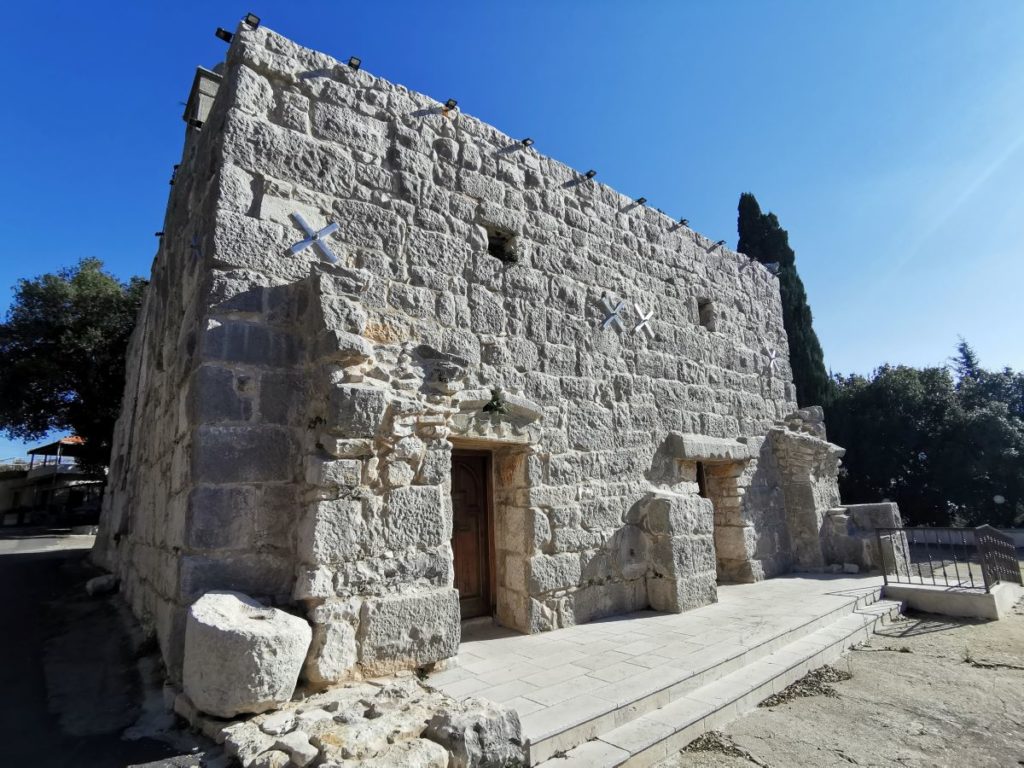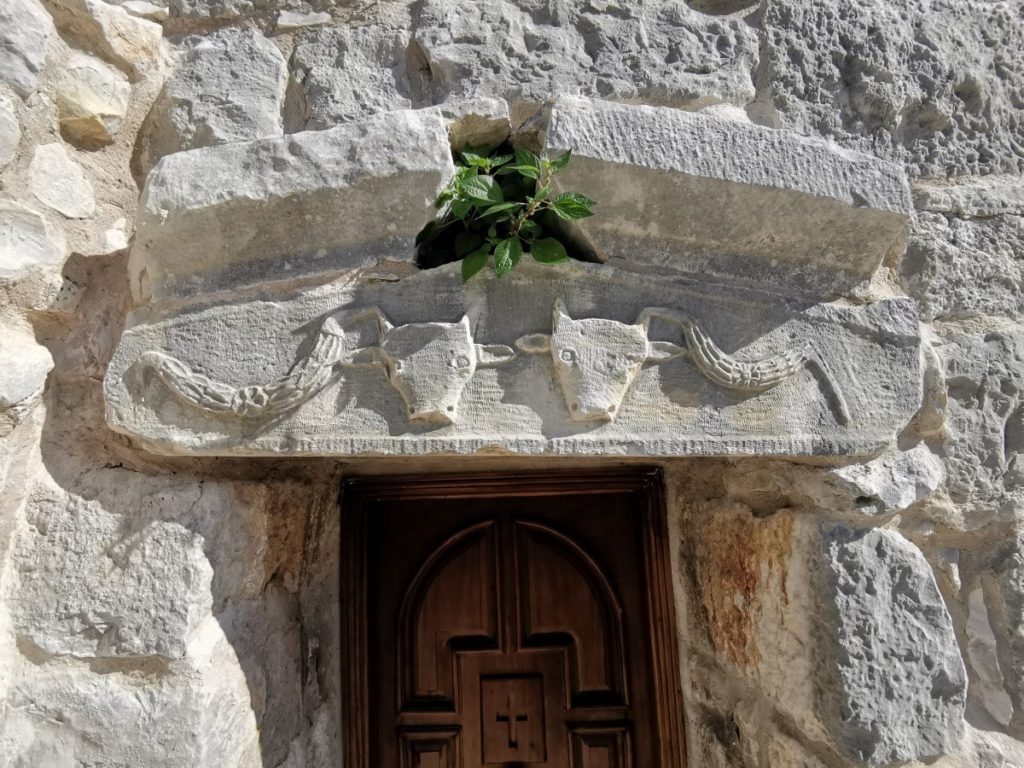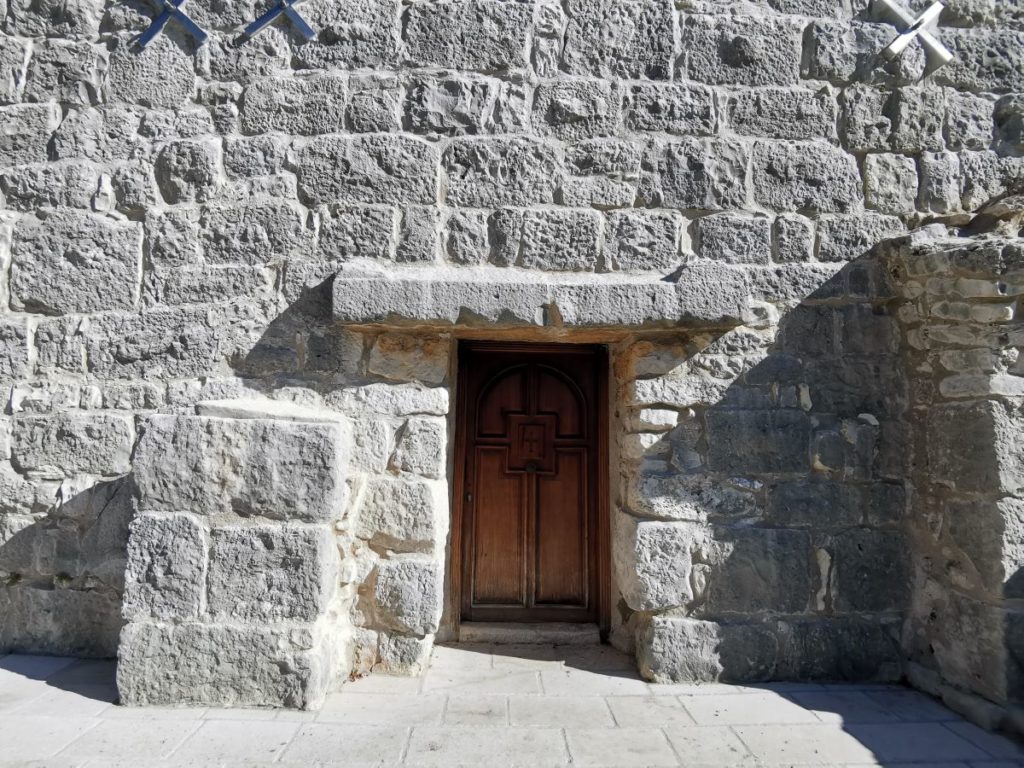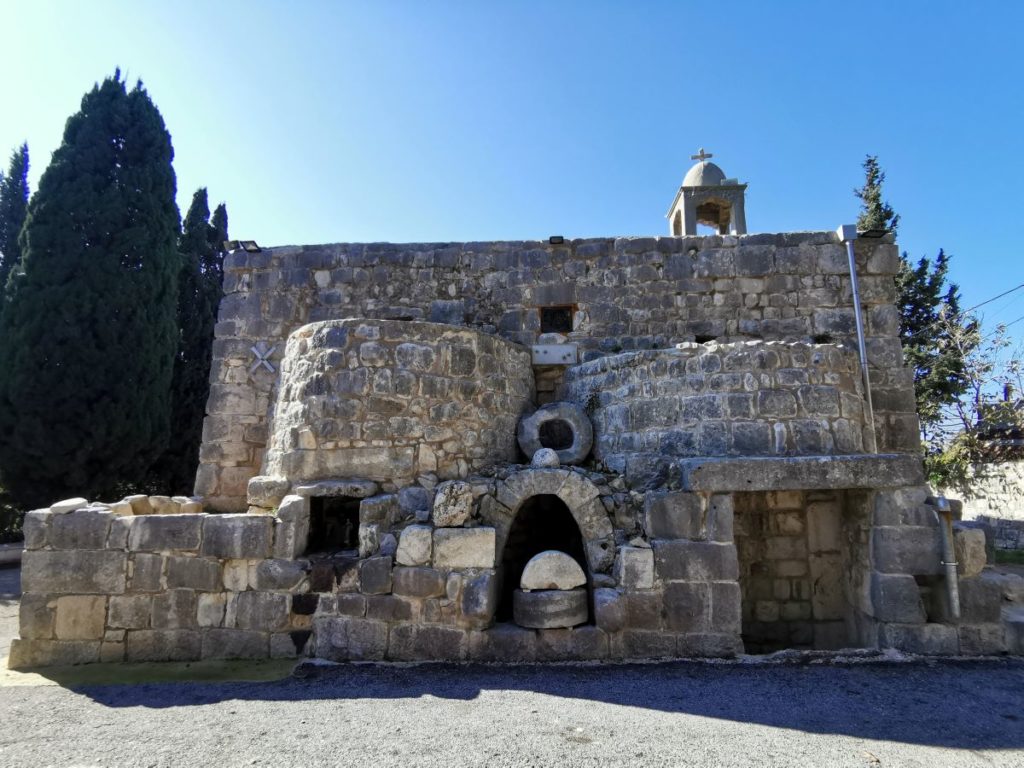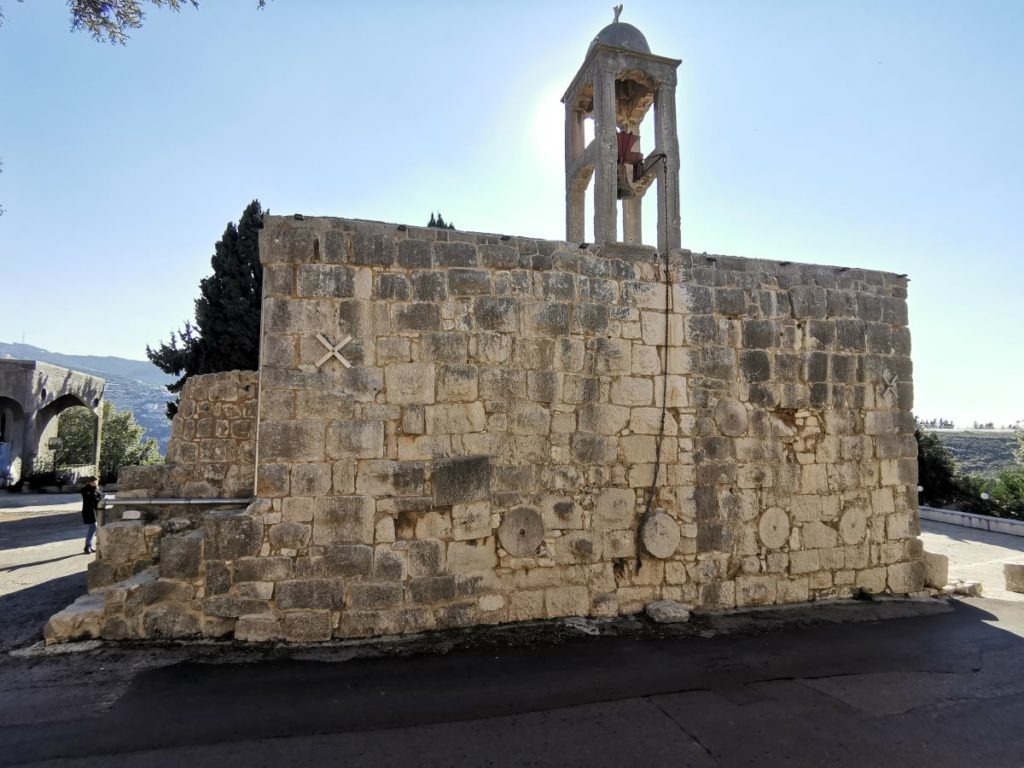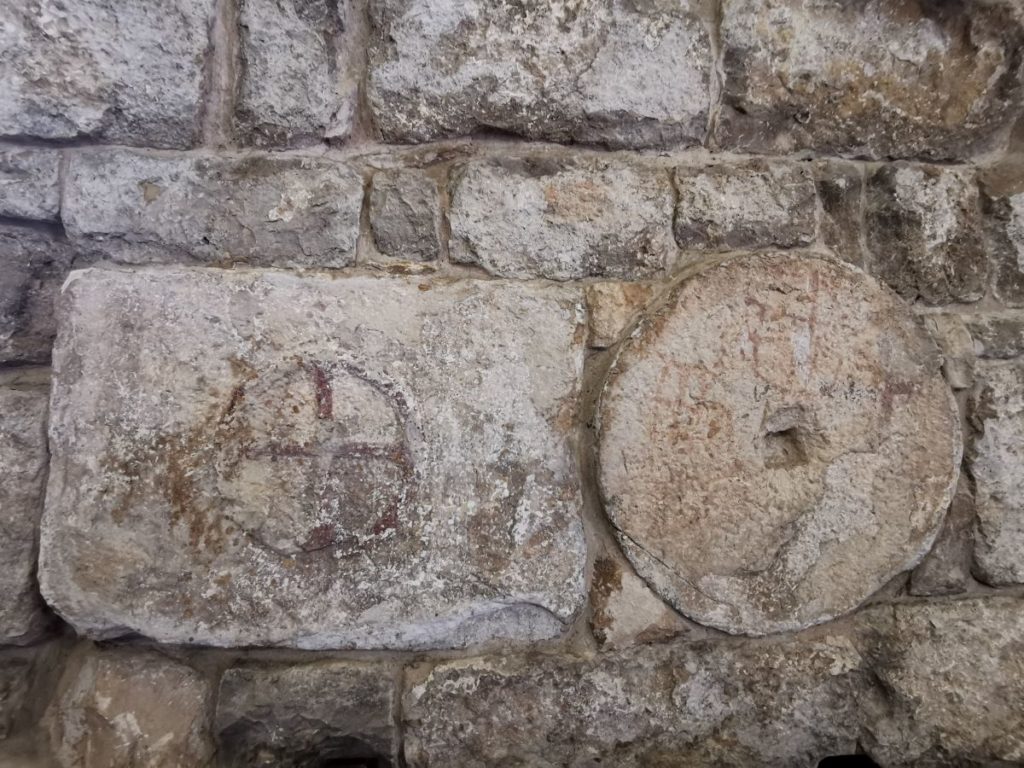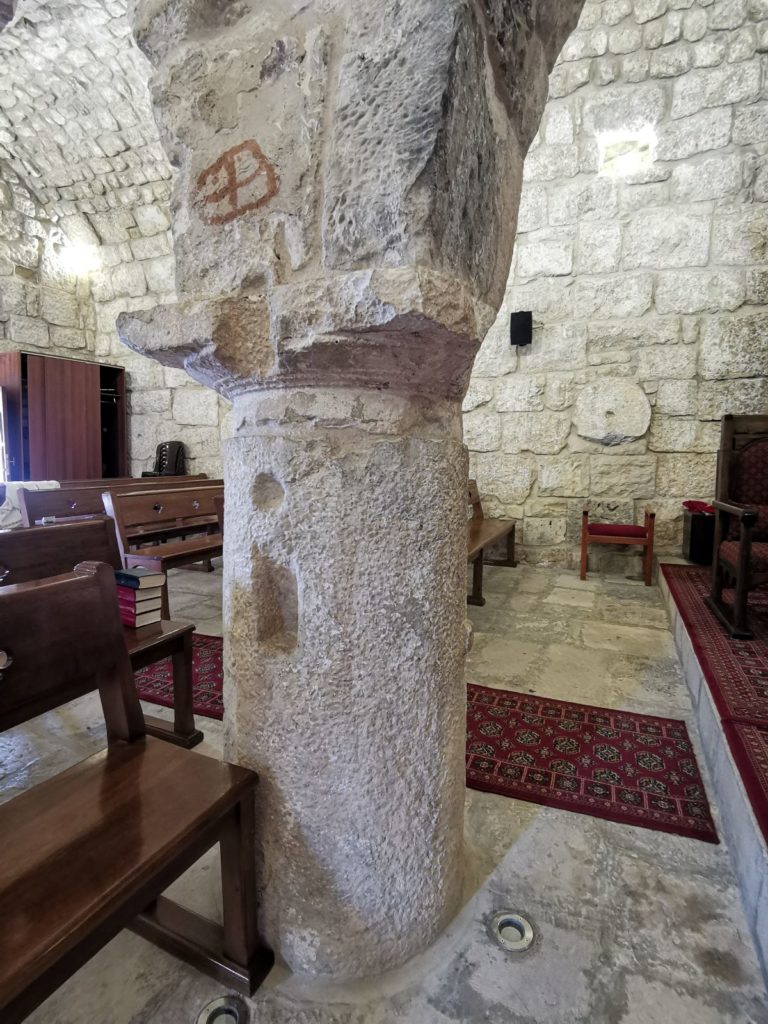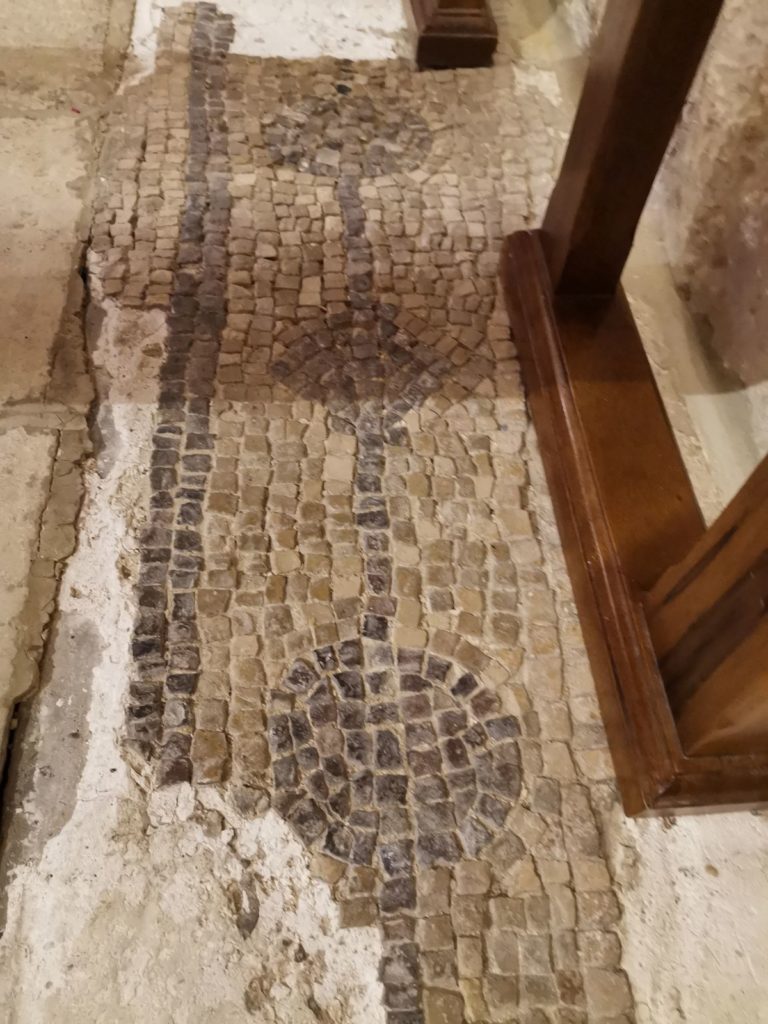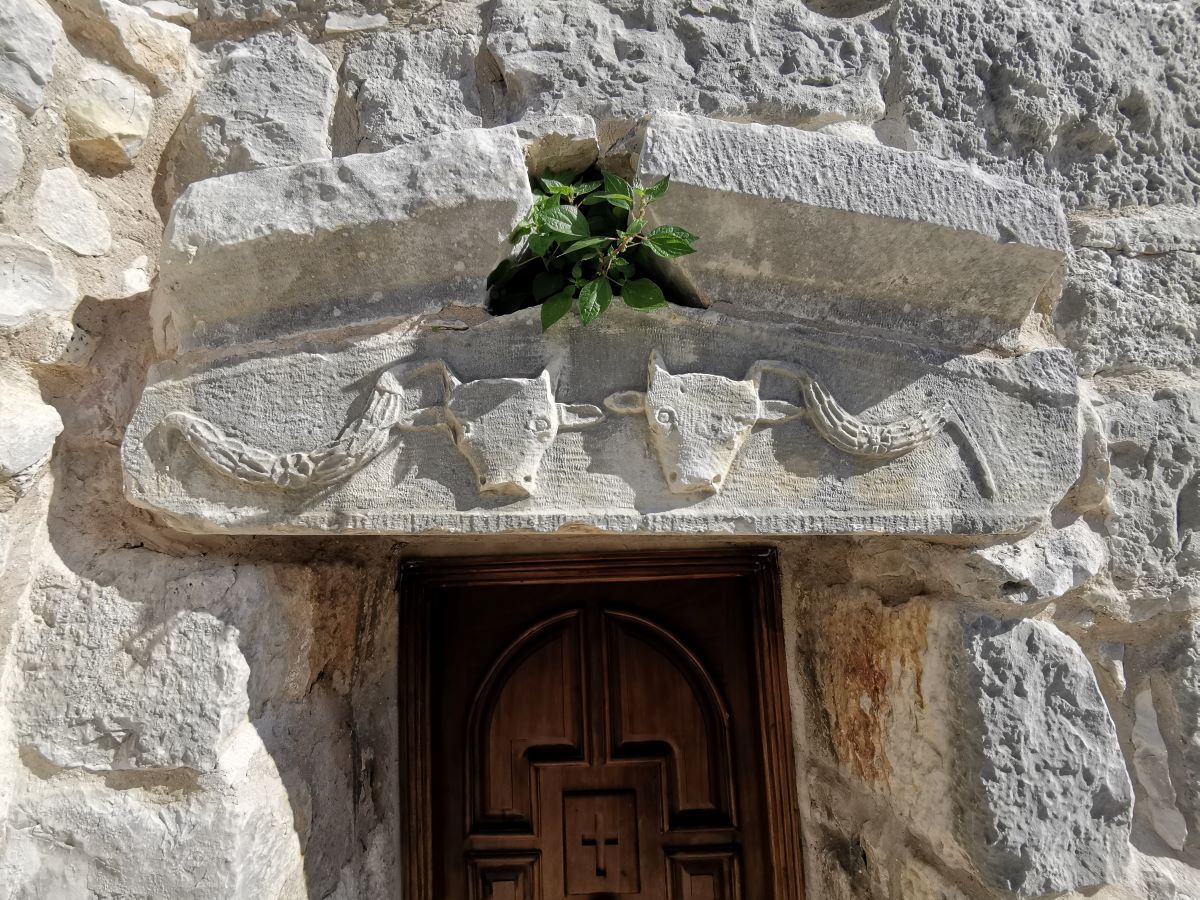Chamat village houses a double church dedicated to the worship of Saint-Thecla (Mar Taqla) and Saint-Stephen (Mar Estfan). The structure is built by using the blocks of a Roman sanctuary.
Timeline
1st Century AD – 3rd Century AD – Construction of the Roman temple following the Doric order
4th Century AD – The temple is destroyed and its stones used to build a church during the Byzantine era
13th Century AD – The church’s structure is remodeled by the crusaders and inaugurated by Maronite Patriarch Daniel El Shamati
Structure
The church is a two-aisle structure: The northern side is dedicated to St. Stephan and to South of Mar Taqla.
The west facade has two entrance doors, one for each abside, and the sarcophagus lids have been used as the lintels, which one of them is decorated with two bull heads with garlands. In addition, the facade has on its both ends what it seems to be the foundations of arches that were dismantled or destroyed over time.
The northern side of the church bears rounded columns in the structure – the columns being part of the lost temple.
Inside the church, one can see remnants of floor mosaics, wall frescoes and columns holding the absides
Note that nearby the church, there were 2 hermitages – one to St. Anthony and the other to St. Simon.
Deity
In an arbitrary manner, G. Taylor relates to the former Roman temple a dedication spotted in the neighboring church of Aabeidat, which commemorates the offering of an altar “to the heavenly Zeus very high Saarnaios who listens, in year 17 of the lord Caesar Antoninus, in the month of Loos” (August 153 AD, if it is about Antoninus Pius rather than Marcus Aurelius or Caracalla).
Importance
This attraction presents how a pagan temple was transformed into a Christian church through alternation of the architectural plan of the building, and the blend of the structural elements, and decoration.
Scroll down to enjoy the pictures and to locate the site on the map.
Karim Sokhn
Tour Operator & Tour Guide
References:
Highways and Byways of Lebanon – Frank and Laure Skeels
La Vie Religieuse Au Liban Sous L’Empire Romain – Julien Aliquo
